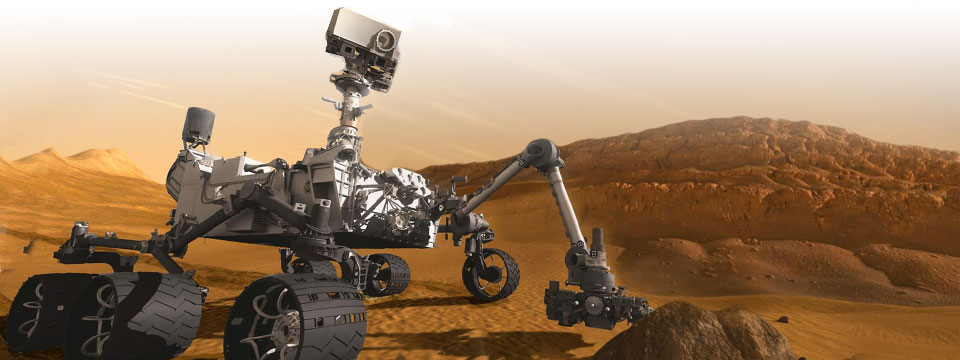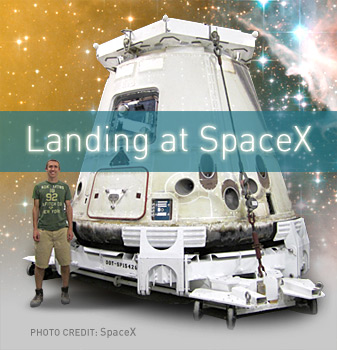Story by CHARLOTTE HSU
The retirement of NASA's space shuttle program in 2011 unleashed a wave of nostalgia across the United States and beyond. People reminisced about the astronauts who served as childhood heroes. Crowds lined the streets to pay their respects to NASA’s fleet—Enterprise, Atlantis, Discovery and Endeavour—as the ships headed to their final destinations: American museums.
For students of aeronautics, the end of the shuttle program was both poignant and exciting, heralding a new era in the exploration of space. This year, a private company became the first-ever to make a commercial cargo delivery to the International Space Station—a job the NASA orbiters used to perform. Science and engineering graduates from universities across the country are applying to work for startups with names like Planetary Resources and Moon Express.
Against this backdrop of change, UB students hosted the nation’s largest student-run space conference this November. The event, SpaceVision 2012, took place from Nov. 8-11, bringing some of the biggest names in aeronautics to Buffalo.
The directors of NASA’s Goddard Space Flight Center, Kennedy Space Center and Langley Research Center were there as speakers. So did astronaut Peggy Whitson, the 13th chief of NASA's Astronaut Office. Private sector presenters included Will Pomerantz, Virgin Galactic’s vice president for special projects, and Chris Lewicki, president of Planetary Resources, “the asteroid-mining company.”

In a nod to changing times, the conference theme was “Crossroads: How Our Generation Will Take Us to the Space Frontier.”
“It’s definitely a huge shift taking place,” said Mary Magilligan, president of UB’s chapter of Students for the Exploration and Development of Space (SEDS), which hosted the meeting. “My friends who are in aerospace, they’re not all thinking of applying to NASA. A couple of my friends are hoping to apply for SpaceX, which is the first company to build and launch its own capsule into space.”
At the conference, panels covered topics including NASA’s transition into a new, post-shuttle era; whether future space missions should be manned or unmanned; the future of private investment in space; and more.
Private and public sector speakers alike presented a hopeful vision for the development of space, envisioning a future where NASA continues to push the boundaries of exploration and firms like Virgin Galactic work on problems like launching tourists into space.
Two UB alumni were among the presenters: Christopher Scolese, director of NASA’s Goddard Space Flight Center, who received a BS in electrical engineering from UB in 1978; and Hussein Jirdeh, head of communications and public outreach for the Space Telescope Science Institute, who received a PhD in mechanical engineering from UB in 1988.
With fellow SEDS members and faculty mentor Paul DesJardin, Magilligan kept busy this semester organizing SpaceVision 2012. The students took the lead in drafting the agenda, courting speakers and reserving hotel space for out-of-town guests. DesJardin provided feedback on the quality of research projects that students nationwide submitted for presentation.
Landing the conference was a big achievement for UB SEDS, especially considering that the group is relatively new at UB. The chapter was founded in 2007, and Magilligan, a native of Long Island, is only its fourth president.
At last year’s SpaceVision, UB SEDS competed against other chapters nationwide for the right to host the 2012 conference. One reason UB’s proposal won was the forward-looking “Crossroads” theme the club selected, Magilligan said.
Magilligan, a junior studying mechanical and aerospace engineering, watched her first live space shuttle launch in summer 2011 while interning for NASA’s Marshall Space Flight Center. Her childhood dream was to become an astronaut, and she was sad to see the shuttle program go.
With time, however, her perspective has evolved.
“The space shuttle’s job was just to go to the International Space Station and back. It’s not to go to the moon and back,” Magilligan said. With the shuttle program gone, she said, engineers can begin to think about projects like sending humans back to the moon or even to Mars.
The Next Generation in Space
This November, the University at Buffalo's chapter of Students for the Exploration and Development of Space hosted the nation's largest student-run space conference. In this video, members discuss what inspired them to become interested in space—and what they hope the future holds for a changing space industry. This video includes footage from NASA.

Magilligan is drawn to space because she views it as one of humanity’s final frontiers—a wild, uncharted territory that should be explored. Space is about adventure and understanding, Magilligan said. It’s about learning something new regarding the universe and humanity’s role in it. If that’s the case, Magilligan added, we should be going places.
It’s a feeling that many fellow students share.
Zach Pace, a physics major from the Buffalo suburb of Clarence, tracks his infatuation with space back to a solar system episode of the “The Magic School Bus.” As a teenager, he pointed telescopes into the sky and studied the universe—all those distant lights burning in the darkness.
This August, Pace, a former UB SEDS treasurer, was among space geeks everywhere who stayed awake deep into the night to watch the landing of Curiosity, a car-sized robotic rover that NASA sent to Mars. He reminisced about this feat one recent afternoon with Andrew Dianetti, past president of UB SEDS and a native of Lancaster, N.Y.
“We built something millions of miles away and sent it to Mars,” Dianetti said.
And lowered it to the surface with “a hovering crane,” Pace added.
“And we’re now driving it around,” Dianetti said, still amazed.
It’s accomplishments like these that get students excited about the future of NASA and aeronautics.
Dianetti, a mechanical and aerospace engineering major set to graduate in 2013, sees exciting career opportunities cropping up for students interested in space. With NASA freed from the space shuttle and private companies working on problems like launching tourists into low-Earth orbit, today’s space industry offers a greater variety of job possibilities than ever before.
What the future holds is in the hands of the next generation—engineers like Magilligan, who would like to design space vehicles, and scientists like Pace, who would like to use space-based observatories to probe the universe and its origins.
“I have family members who ask me, ‘Why are you still interested in space? There’s hunger and other problems on Earth,’” Magilligan said.
Her response: Exploration is a human instinct, a means to advance our collective culture and better understand our world. We’ll never know what we’re missing until we go.









